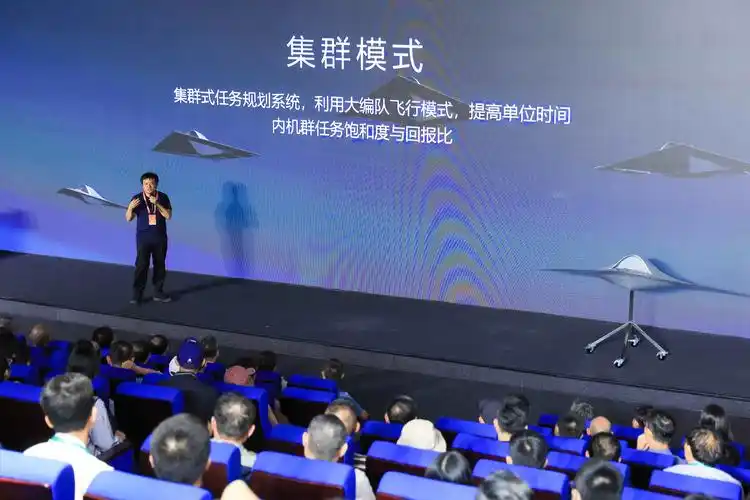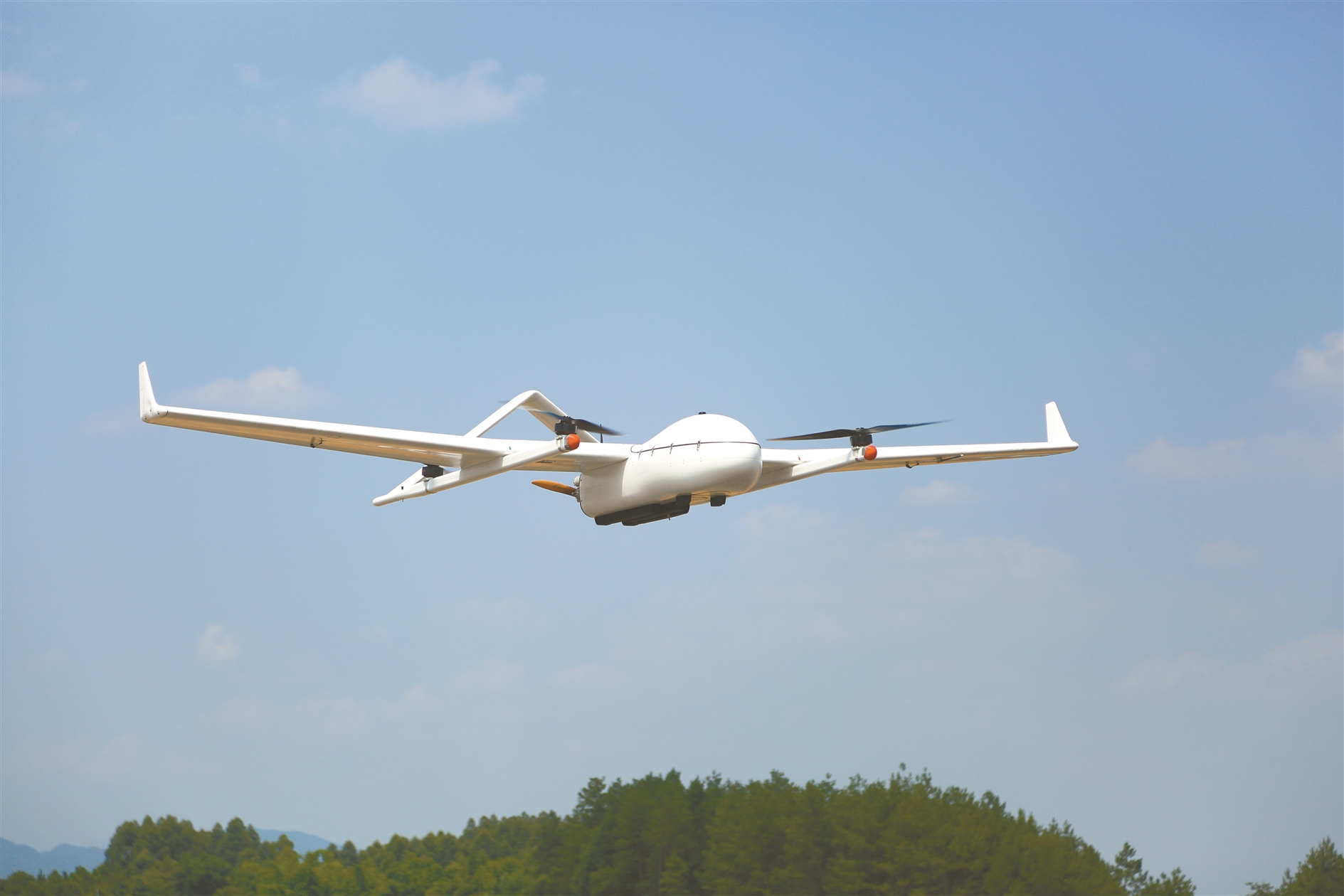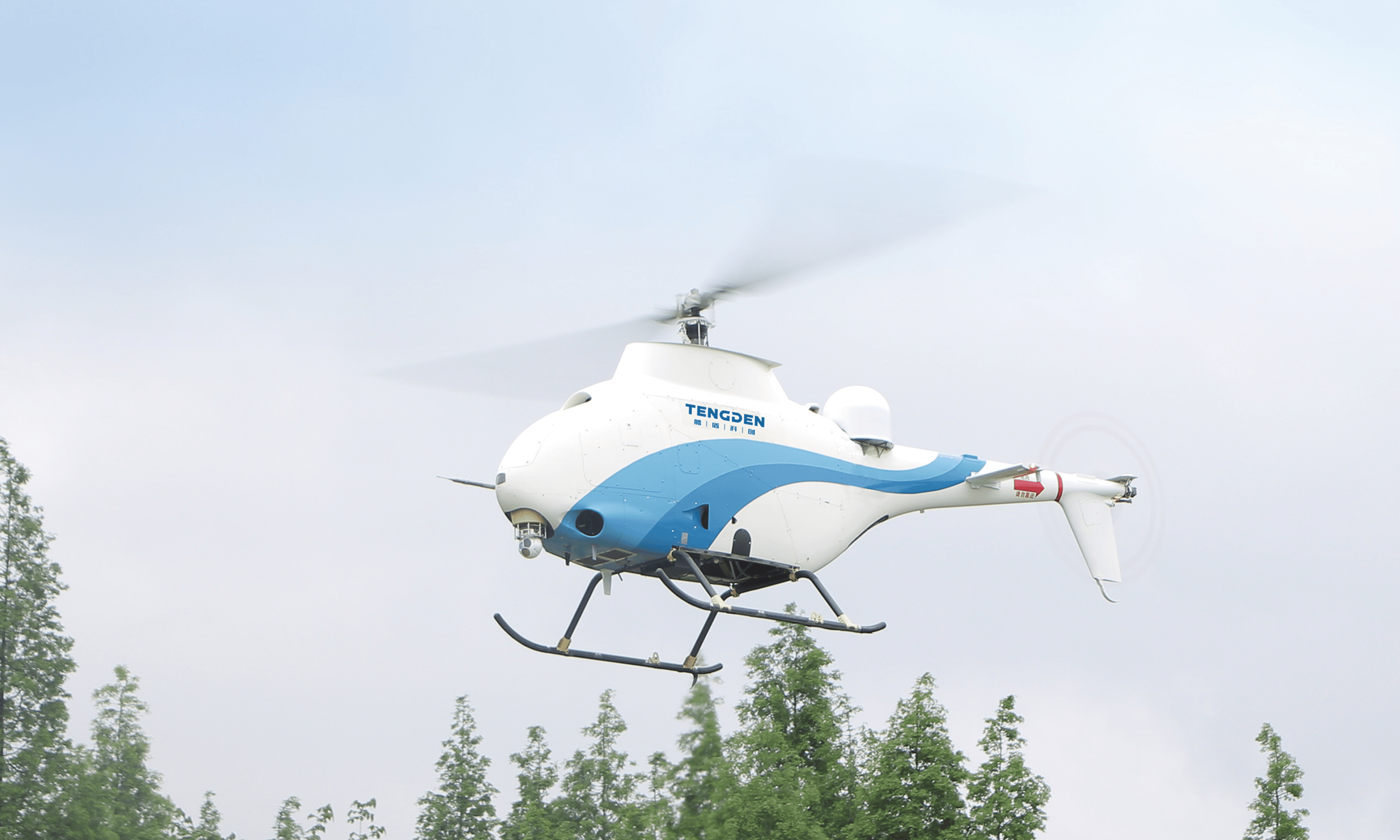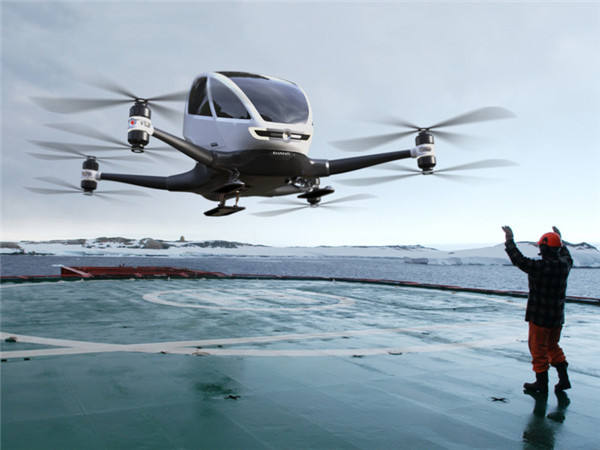
People are playing in Shenzhen Talent Park, scanning the QR code of nearby drones to order food with their mobile phones. After about 20 minutes, the drones will deliver the food... This is not a science fiction scene, but the tip of the iceberg of low altitude economic commercial applications in the real world.
Driven by multiple factors such as policies, technology, and applications, the trillion dollar low altitude economy market is poised to take off, attracting various industry giants such as Huawei, ZTE, Meituan, SF Express, China Mobile, China Telecom, and China Unicom to enter and seize the market.
In the eyes of industry insiders, the low altitude economy is like real estate empowered by high technology, adding a three-dimensional space for development and utilization on the original two-dimensional plane, thereby generating economic value and promoting industrial ecology. "In the future, low altitude aircraft will operate freely and standardly at low altitudes like cars on the ground.
However, interviewees generally believe that the global low altitude economy industry is still in its early stages of development, with pain points and difficulties in technology, ecological integration, and application. At the same time, there is still room for improvement in airspace management, safety laws and regulations, and other aspects.
It is expected that low altitude economic applications will first explode in the fields of logistics and manned flight, "Zhao Zhiyong, Director of ZTE 5G-A Sensing Products, told Securities Times reporters.
Industrial capital is entering the market one after another
In the past two years, the term 'low altitude economy' has rapidly entered the public eye.
On the one hand, industrial capital represented by Huawei, ZTE, Meituan, SF Express, etc. have entered this track one after another, and the industry has started and begun to accelerate.
On the other hand, although the industry has not yet exploded, the capital market has already become "hot" ahead of schedule. According to data from Dongfang Wealth Choice Financial Terminal, the A-share low altitude economic index has risen by over 60% in the 53 trading days from September 18 to December 6, 2024.
Specifically, Huawei has established the "Low altitude Intelligent Networking Laboratory" with China Telecom, dedicated to collaborating to promote research and application of low altitude communication technology, and has partnered with China Mobile and others to create the "5.5G+Low altitude Intelligent Networking". On November 5th this year, Huawei also announced its patent for sulfide solid-state batteries.
It is understood that the low altitude intelligent network is the foundation of the development of the low altitude economy, which can provide functions such as communication, monitoring, and services for the low altitude economy. In addition, low altitude aircraft have higher requirements for battery energy density and safety. Compared to traditional batteries, solid-state batteries have significant advantages in energy density and safety.
ZTE relies on 5G-A integrated sensing, computing, and intelligence technology to build a low altitude intelligent network, and has already partnered with operators and third-party partners to complete over 80 low altitude sensing pilot projects in 25 provinces and cities, covering various application scenarios such as logistics distribution and low altitude security in key areas.
According to data from the Ministry of Industry and Information Technology, as of September 2024, the number of low altitude economy related enterprises in China has exceeded 50000, including 118 listed companies, 211 specialized and new "little giant" enterprises, and 3991 high-tech enterprises.
Behind the influx of industrial capital, the trillion dollar blue ocean market is poised to take off. The "Research Report on the Development of China's Low altitude Economy (2024)" released by CCID Consulting shows that the scale of China's low altitude economy will reach 505.95 billion yuan in 2023, with a growth rate of 33.8%. According to estimates from the Civil Aviation Administration of China, the market size of the low altitude economy will reach 1.5 trillion yuan by 2025 and 3.5 trillion yuan by 2035.
In the future, low altitude aircraft will operate freely and standardly at low altitudes like taxis on the ground. The low altitude economic market is a new blue ocean market, and currently everyone is focusing on how to jointly promote the development of the low altitude economy, "Zhao Zhiyong told reporters recently.
Space development empowered by high technology
As a natural resource, low altitude has always existed. Why has the low altitude economy gradually emerged in recent years?
The so-called low altitude economy actually aims to transform the natural resources at low altitudes into economic resources through expansion, similar to real estate development of land resources. We can call it high-tech empowered spatial development, which is equivalent to adding a three-dimensional space on the two-dimensional plane of the ground. Society hopes to create a point-to-point, convenient, timely and efficient new mode of transportation in this space, "Cui Yijun, director of ZTE Wireless Future Laboratory, told Securities Times reporters.
Society has never turned low altitude development into an economic resource, mainly due to insufficient technological service capabilities in the past. "Cui Yijun said that the development of traditional ground space economy only requires ensuring communication signal coverage, but the development of low altitude economy requires accurate perception of the flight situation, surrounding environment, specific location, etc. of low altitude aircraft, as well as the ability to communicate with ground signals. This means that communication, perception, navigation, and monitoring technologies are crucial for the development of low altitude economy, which involves new technologies such as AI, digital twin, Beidou+RTK navigation technology, and 5G-A sensing integration that have developed rapidly in recent years. With these high-tech advancements, people have transformed low altitude space into digital space, planning, developing, and monitoring it. The sentence is:.
In Cui Yijun's view, the rapid breakthrough and comprehensive evolution of multidimensional technology is one of the important factors driving the development of low altitude economy. In addition to the above-mentioned technologies, the development of unmanned aerial vehicle technology is also crucial. He believes that as the mainstay of low altitude economy, drones first need to achieve lightweighting, while continuously improving key technologies such as obstacle avoidance, hovering, fault tolerance, and forced landing.
Industry insiders told reporters that battery, electronic control, motor and other three electric technologies are also the core of the rapid development of eVTOL.
It is understood that the emergence of eVTOL is one of the important technological driving forces for low altitude economy. EVTOL stands for electric vertical takeoff and landing aircraft, which can take off and land vertically on small plots of land or rooftops. It is easy to charge, has low noise, and can be widely used in intercity transportation, tourism, medical, emergency and other fields. At present, high-energy density batteries, highly reliable motors, electronic controls, and autonomous driving technologies applied in the new energy vehicle industry have gradually been used in eVTOL research and development manufacturing.
Application driven is an endogenous force for achieving a low altitude economic and commercial closed loop. Cui Yijun said that manned services, cargo services, low altitude security, low altitude operations, and public security assistance have become the main scenarios for the application of low altitude economy. Without these business scenarios, low altitude economy will not be able to form a closed-loop business model.
Policy driven is also a key factor in the continuous upgrading of the low altitude economy strategy. In 2021, the National Comprehensive Three dimensional Transportation Network Planning Outline first proposed the concept of low altitude economy; In 2023, the Central Economic Work Conference pointed out the need to accelerate the development of new quality productive forces in the low altitude economy. According to incomplete statistics, more than 20 provinces in China have included the development of low altitude economy in their local government work reports or introduced relevant policies.
The acceleration of the development of the low altitude economy is mainly driven by the integrated operation of policies, applications, and technologies. The top-level planning at the national level is constantly deepening, injecting strong impetus into the development of the low altitude economy, "said Cui Yijun.
From the perspective of the low altitude economy industry chain system, Zhu Minghao, Executive Director of the China High end Manufacturing Research Center at Beijing Jiaotong University, stated that the upstream of the low altitude economy mainly involves batteries, motors, and air traffic control systems, the midstream includes unmanned aerial vehicles and general aircraft, and the downstream is mainly applied in low altitude logistics, low altitude tourism, medical rescue, agriculture, flight training, and operation and maintenance. The low altitude economy will drive the formation of a trillion dollar market scale.
Logistics and manned flight fields will be the first to explode
Industry experts have stated that as an emerging economic form, the low altitude economy has broad development prospects and market potential, but still needs to face many challenges, such as lagging laws and regulations, insufficient infrastructure, limited public acceptance, and safety issues.
To promote its healthy development, several experts have put forward suggestions, firstly, to accelerate the formulation and improvement of relevant laws and regulations, clarify the rights and obligations of all parties involved; The second is to increase investment in infrastructure construction, such as building dedicated take-off and landing points, constructing dedicated networks, etc; Thirdly, strengthen airspace management; The fourth is to strengthen technological research and innovation.
At present, in terms of strengthening airspace management, Shenzhen has taken the lead in planning commercial activities in the low altitude economic field below 600 meters. Among them, 0-120 meters are the activity areas of similar businesses such as Meituan, 120-300 meters are the activity areas of express logistics companies such as SF Express, and above 300 meters are the activity areas of other low altitude aircraft such as eVTOL. At present, Shenzhen has opened a total of 83 drone routes, achieving approximately 300000 drone cargo and comprehensive application flights.
From the perspectives of security and technology, the demand for network infrastructure in low altitude economy can be divided into two aspects: low altitude communication and low altitude perception. Among them, low altitude communication is used for unmanned aerial vehicle image transmission and data transmission; In terms of low altitude perception, for cooperative drones, the main focus is on monitoring and service, sensing the position, altitude, heading, speed, etc. of such drones; For non cooperative drones, the main focus is on detection and countermeasures, achieving black flight warning, emergency response, and ensuring airspace safety.
At present, the low altitude network is not yet perfect in terms of low altitude communication and perception technology. Low altitude communication mainly has problems such as point-to-point communication not supporting non line of sight flight and insufficient low altitude coverage of 4/5G networks. Low altitude perception has problems such as low perception accuracy and difficulty in continuous networking. Cui Yijun said that in order to solve the above problems, ZTE has built a low altitude intelligent network based on 5G-A sensing and intelligent integration technology.
It is reported that ZTE's 5G-A integrated sensing and intelligent technology has both communication and perception capabilities. Compared with traditional technologies, it has advantages such as high accuracy, fast deployment, and easy networking. In terms of perception, this technology introduces continuous wave and pulse wave dual waveform intelligent perception technology for the first time, and relies on intelligent metasurface technology to solve the problem of traditional radar equipment being difficult to balance between long-distance detection and close range blind spots.
ZTE's 5G-A sensing solution has also added an intelligent computing unit, which can locally complete functions such as trajectory perception, image rendering, trajectory calculation and depiction, thereby displaying the trajectory of the drone, achieving digitalization and refinement of low altitude navigation, and further improving the safety and efficiency of low altitude flight.
Although the company has achieved many breakthroughs in low altitude economy, it still faces significant challenges in the process of business promotion. For example, in the process of cooperating with operators to conduct various tests, there are still many technical challenges in specific scenarios, and we are constantly improving and iterating related technologies. In addition, there are also certain challenges in the integration of the company's technology with other industries, "Zhao Zhiyong admitted.
As for when the commercial application of low altitude economy will break out, Zhao Zhiyong told reporters, "The application field of low altitude economy is very extensive. In the long run, it is expected to be the first to break out in logistics and manned branches. The annual logistics distribution in China exceeds 400 million pieces, and the personal commuting market also has huge potential. These two fields will become the pillar industries of low altitude economy
Hong Yong, a think tank expert at the China Digital Reality Integration 50 Forum, believes that "it is expected that the commercial outbreak of low altitude economy may take another 3 to 5 years, depending on factors such as technological maturity, improvement of regulatory framework, and public acceptance
Several interviewed experts, including Zhang Xinyuan, the research director of Kefangde Think Tank, told reporters that in terms of manned transportation, the safety performance of low altitude economy needs to be fully guaranteed. However, the safety performance of low altitude economy manned transportation has not yet reached the level of traditional air transportation, mainly because there is still a certain gap in the technological maturity and operational experience of low altitude aircraft. To achieve the safety level of traditional air transportation, many difficulties need to be overcome, including but not limited to stricter safety verification processes, more reliable redundant designs, and effective response mechanisms for emergencies.




